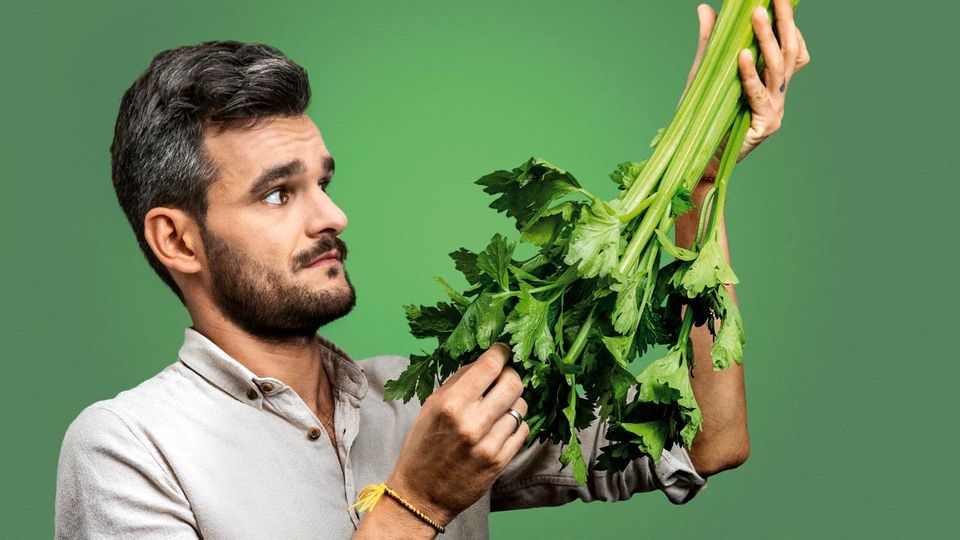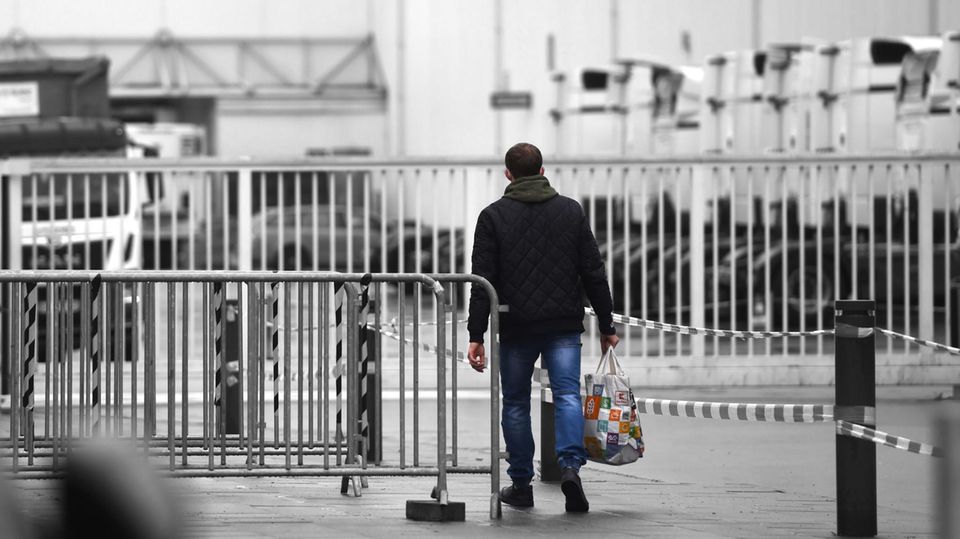New documentary
Slaughterhouse Reality: Who will miss the schnitzel after this film?
Face to face with the last pig: Teacher Katrin takes part in a slaughtering course.
Not for the faint-hearted: The ARD documentary “We and the Animal – A Slaughterhouse Melodrama” shows butchers at work. And two amateur butchers.
Start of shift in Europe’s largest cattle slaughterhouse. An employee turns on the light at the site of mass animal slaughter. The machines wake up under the bright lights. Industrial whirring, metal clinking. Everything looks sparkling clean, sterile. Butcher hooks start moving on the ceiling. The first transport of cows arrives outside.
The documentary by David Spaeth (Grimme Prize for “Fraud – The Rise and Fall of an Imposter”) shows the process from happy mooing to anonymous steak in every detail. He spares the audience nothing. Cows are killed like an assembly line and cut into individual parts. A sow hangs from the ceiling and bleeds out. A woman cries for a pig shortly before its death. Not everything is shown in detail, but the images are enough to create a strong feeling of oppression.
Meat consumption is increasing worldwide
Meat consumption is falling in Germany and increasing worldwide. “We have a broad majority who eats meat. And if society thinks it’s okay, it has to be created somehow,” says butcher Elisabeth. She is one of those who speak openly about her profession in this documentary. Spaeth has three years to make his film. People who were not easy to find researched. The two managing directors of the Bavarian cattle slaughterhouse also give an interview: “I love animals. But I also have no problem getting my food from it,” says David, who, like his colleague Matthias, only goes by his first name.
While the two shirt-wearers sit in front of an idyllic picture – cattle grazing, blue sky – employee Ionel is busy doing piecework. The cattle from the cow transport gradually come to him in the “shooting range”. There are 500 to 1000 animals per day. He has a minute, strokes their backs, hums to them to calm them down. “If a cow is particularly stressed, I sometimes close my eyes when I kill it,” he says. Since he was confronted with all the blood every day, he no longer eats beef.
There is always talk of respect and responsibility towards animals. Moments of quarreling and reflection become loud. Jürgen has been a butcher for 40 years and runs an organic meat production company: “It’s becoming increasingly difficult for me to kill an animal instead of it becoming easier.” Butcher Elisabeth suspects that in the future it will be redefined once again whether one is allowed to kill animals at all – and has ever been allowed to do so.
Invited to the butcher course
Two teachers have embarked on a strange experiment and are attending a butchering course in a rural butcher shop in Hesse. One Katrin gave the course to the other Katrin for her birthday. The motivation remains unclear: is it curiosity? A test of courage? The butcher welcomes the two into his shop. The grin on his face remains constant the entire time, like a protective shield. Blonde Katrin says: “We’re looking forward to it.” When she later sees the pigs in the pen, she hesitates. The next day tears flow. Between the euphoria and the moment of shock, there is a platter: smoked hunting sausage, ham. The pigs are stunned with electric tongs, the grinning butcher explains. That’s “easy”.
In the early hours of the morning it starts with a scene that is difficult to endure. It is dark, a few pigs are still sleeping, the Hessian butcher is walking around, routinely slaughtering animal after animal. It’s five or six. The two women stand at the gate and watch. The ground is covered in blood, only one pig is left, nudging a dead pig with its trunk. The body is dragged away. Then the last pig dies. Blonde Katrin is crying. The other is amazed that there were so many so quickly.
At this point the documentary plays the questions of conscience back to the consumer: Is it allowed to kill animals? And if so, how many? Ten, hundreds, thousands a day? And is it okay to cry when you enjoy biting into a juicy schnitzel? Herbivores triumph and have long since made their decision, even without the “slaughterhouse melodrama.” Everyone else might be a little confused by this.
The documentary will run on March 11, 2024 at 11:35 p.m. on ARD and is in the ARD media library.




